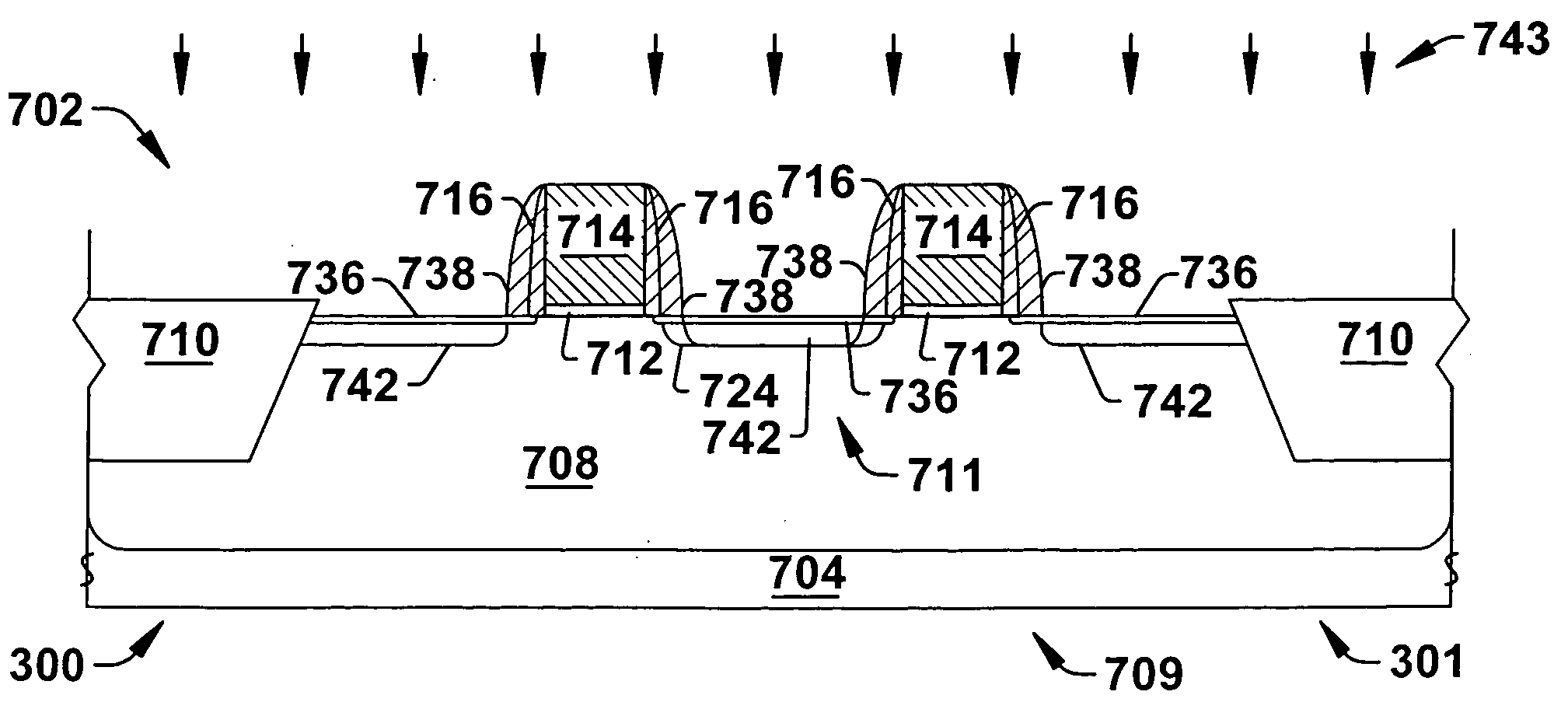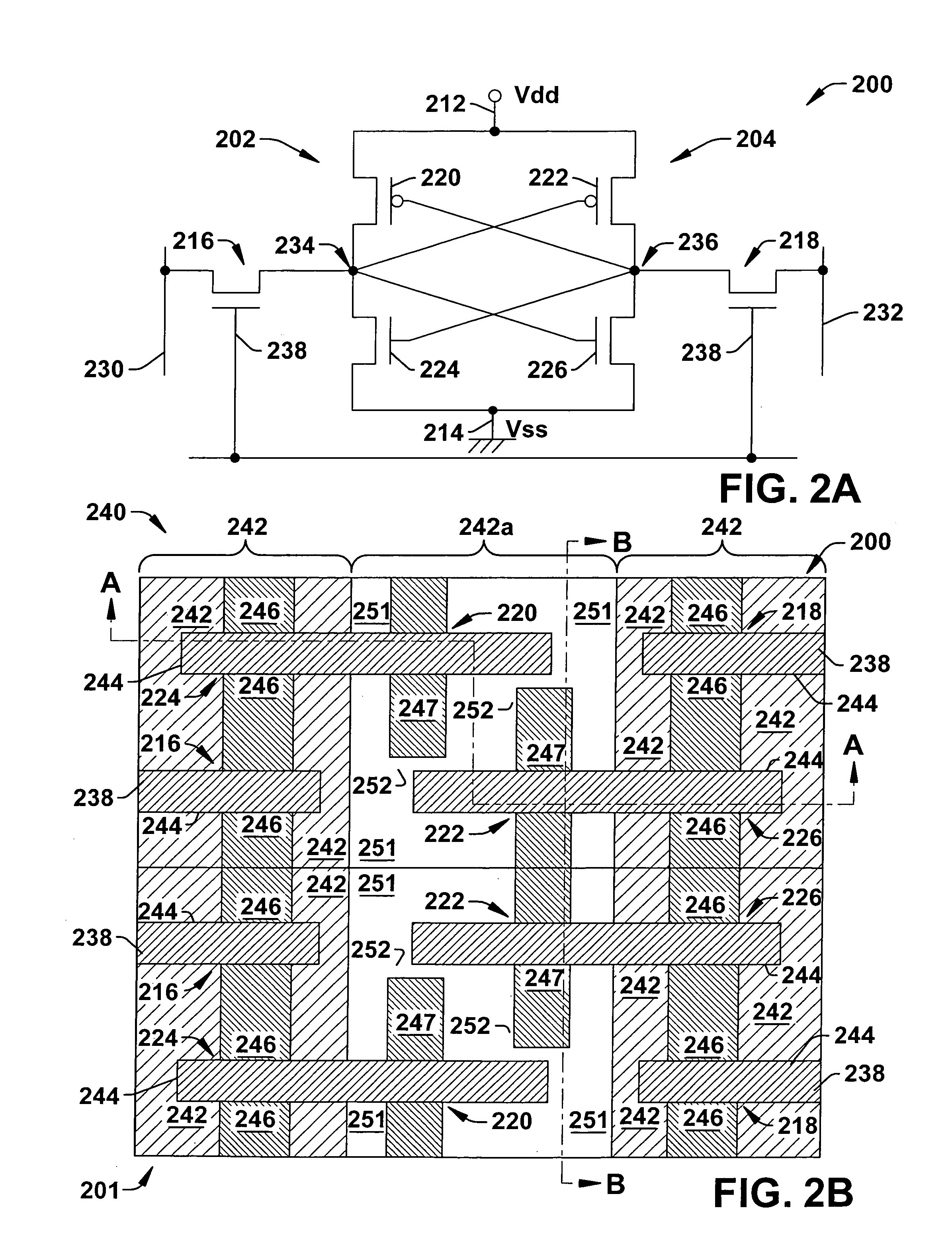Method to prevent defects on SRAM cells that incorporate selective epitaxial regions
- Summary
- Abstract
- Description
- Claims
- Application Information
AI Technical Summary
Benefits of technology
Problems solved by technology
Method used
Image
Examples
Embodiment Construction
[0026]One or more implementations of the present invention will now be described with reference to the attached drawings, wherein like reference numerals are used to refer to like elements throughout, and wherein the illustrated structures are not necessarily drawn to scale. The invention provides transistor and SRAM memory structures and methods in which transistor mobility or drive current is improved while minimizing defects associated with selective epitaxial growth in moat tip regions of the core region of such memory devices.
[0027]Referring now to FIG. 1, an exemplary semiconductor device that incorporates SRAM memory circuitry 100 is illustrated such as may be used in accordance with one or more aspects of the present invention. The SRAM memory containing device 100 comprises, for example, a semiconductor integrated circuit chip having a core region 110 and a logic region 120. The core region 110 comprises an array of SRAM memory cells, for example, an array of 6T SRAM memory...
PUM
 Login to View More
Login to View More Abstract
Description
Claims
Application Information
 Login to View More
Login to View More - R&D
- Intellectual Property
- Life Sciences
- Materials
- Tech Scout
- Unparalleled Data Quality
- Higher Quality Content
- 60% Fewer Hallucinations
Browse by: Latest US Patents, China's latest patents, Technical Efficacy Thesaurus, Application Domain, Technology Topic, Popular Technical Reports.
© 2025 PatSnap. All rights reserved.Legal|Privacy policy|Modern Slavery Act Transparency Statement|Sitemap|About US| Contact US: help@patsnap.com



